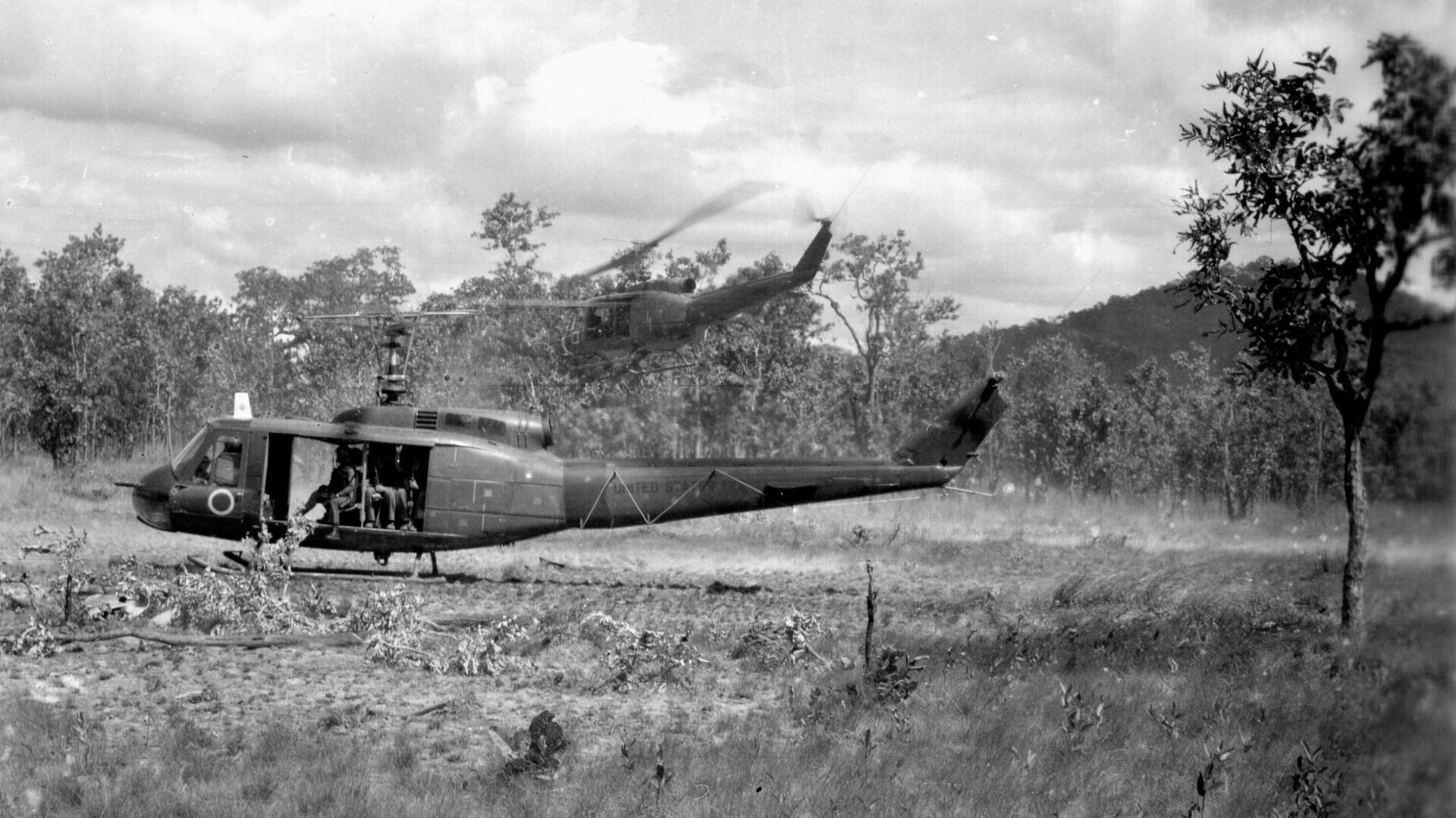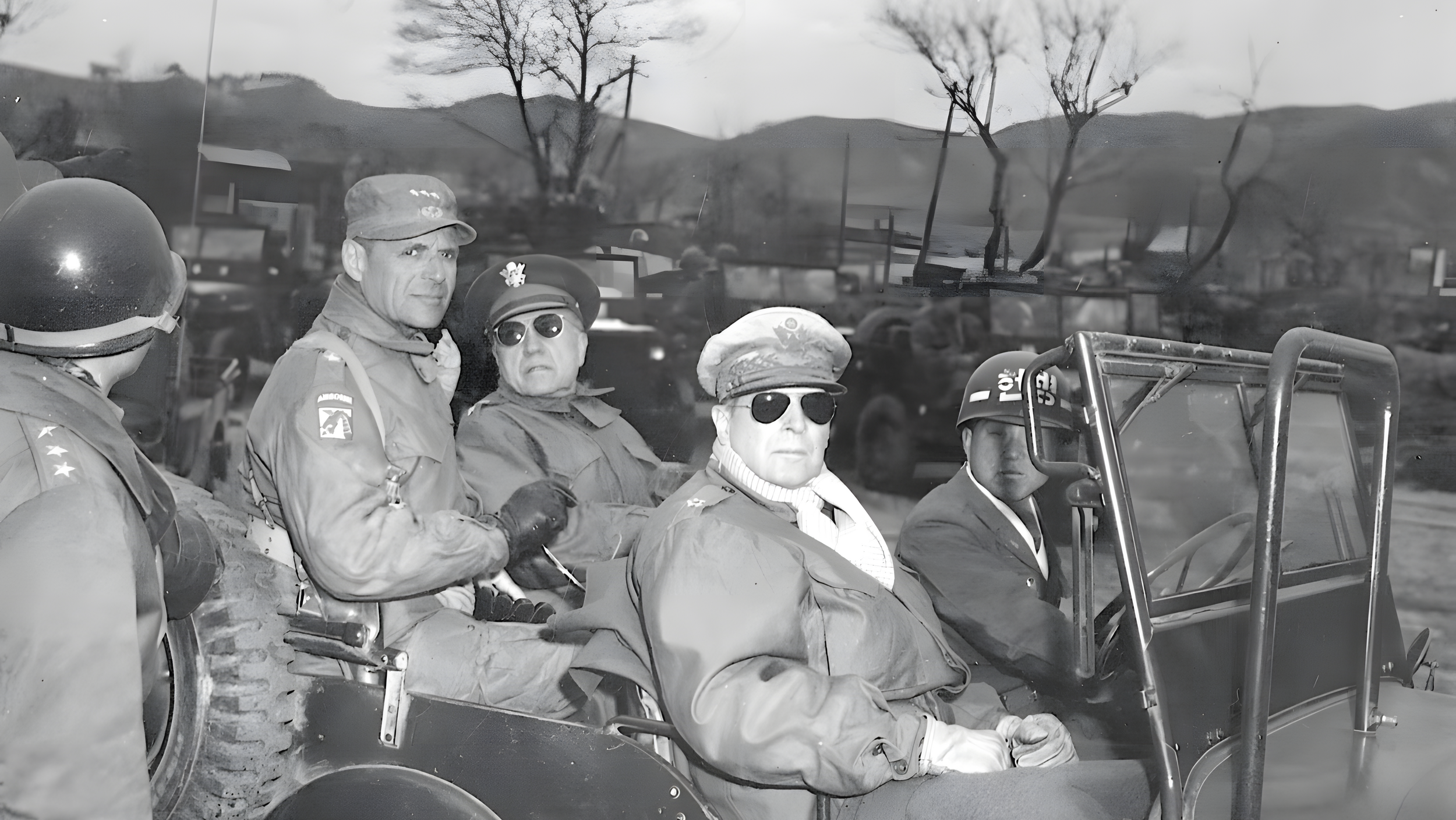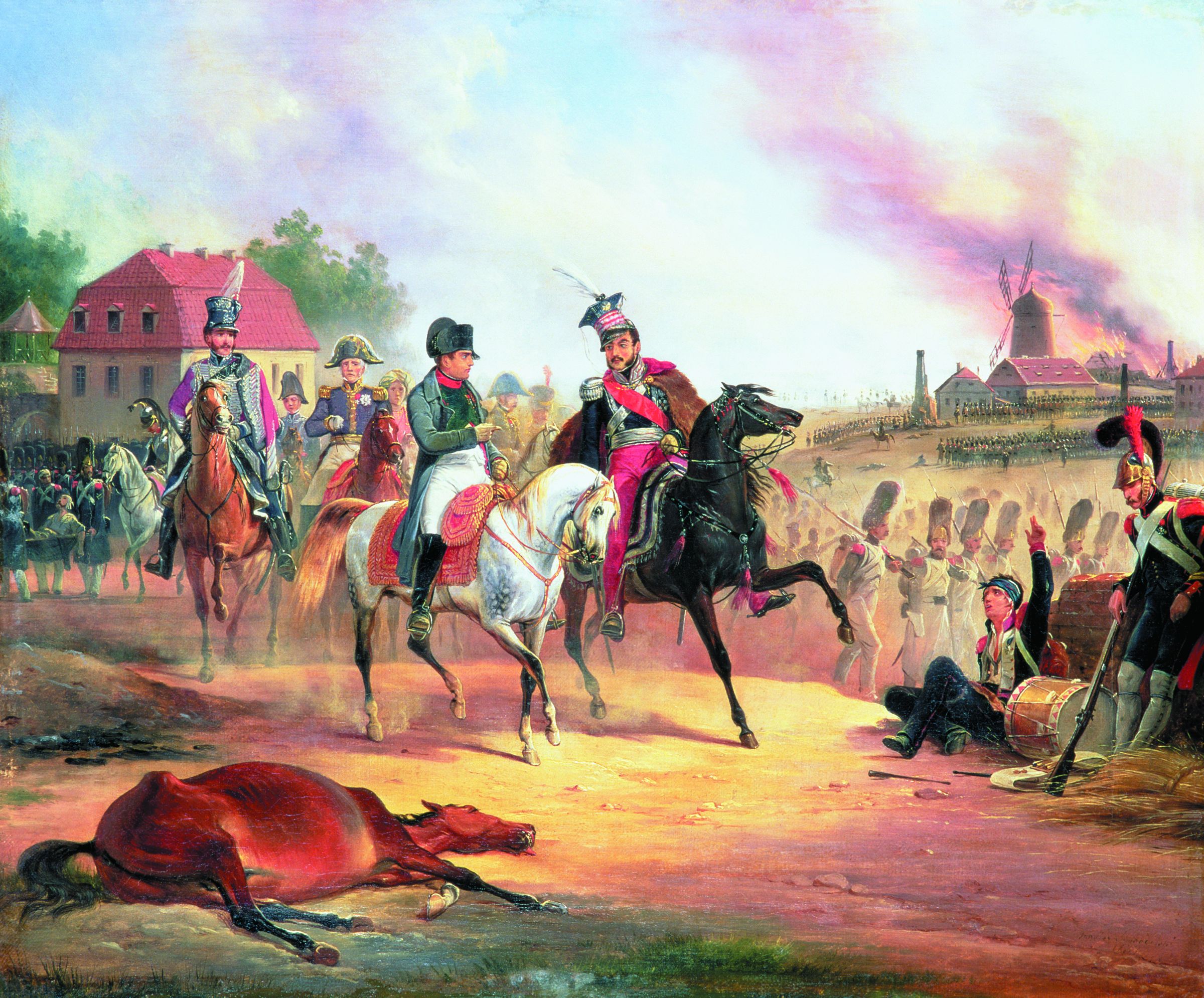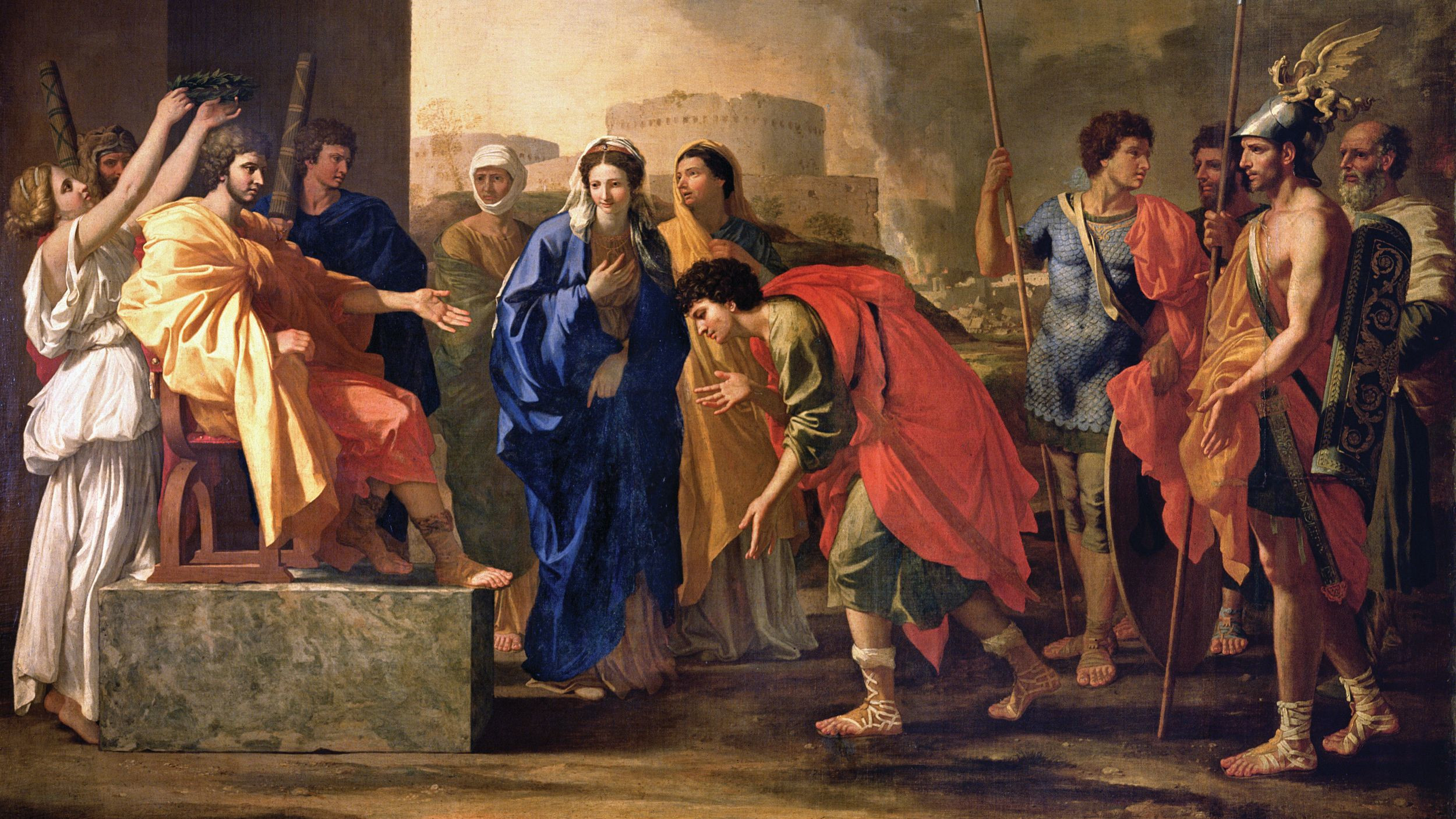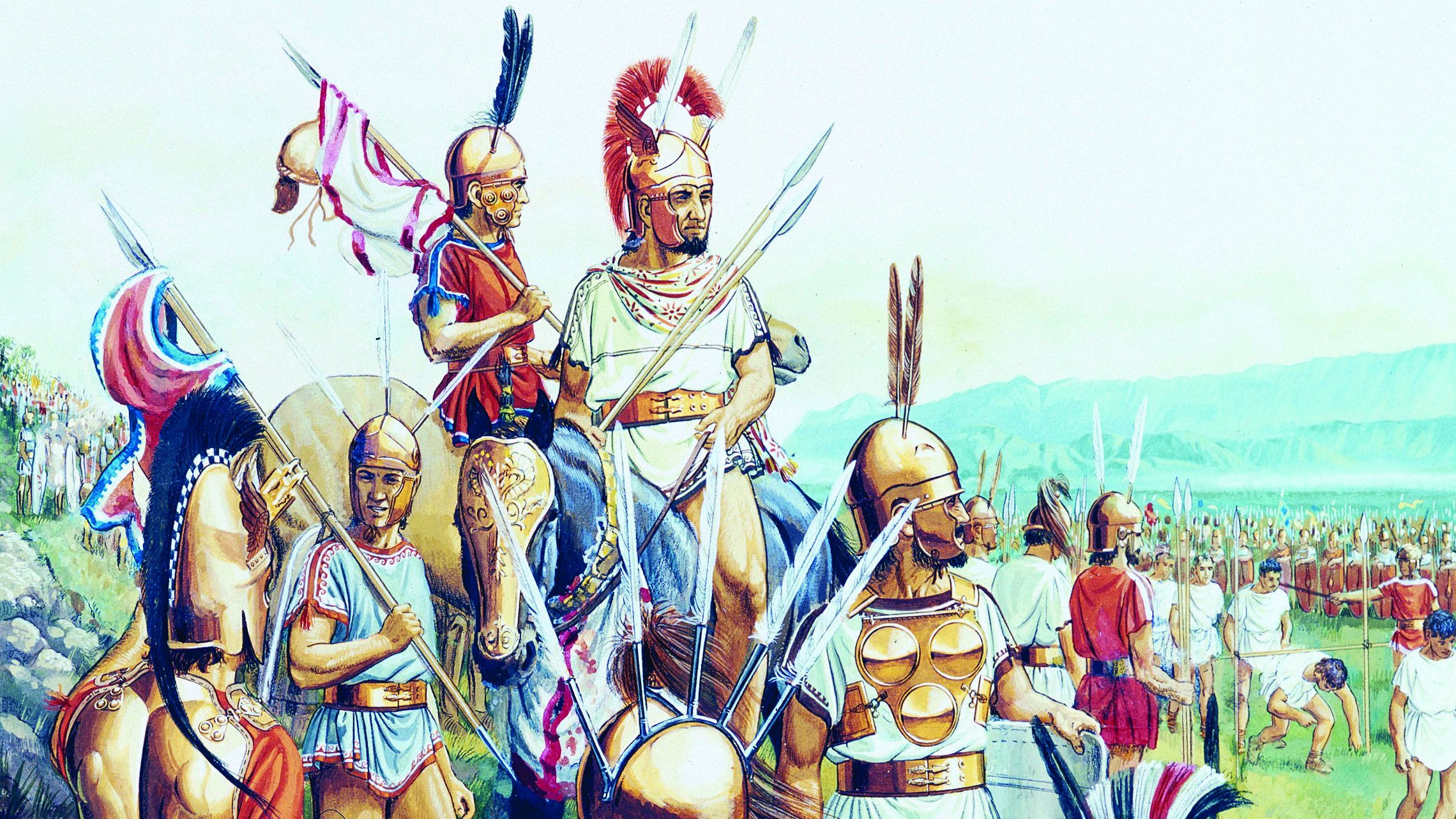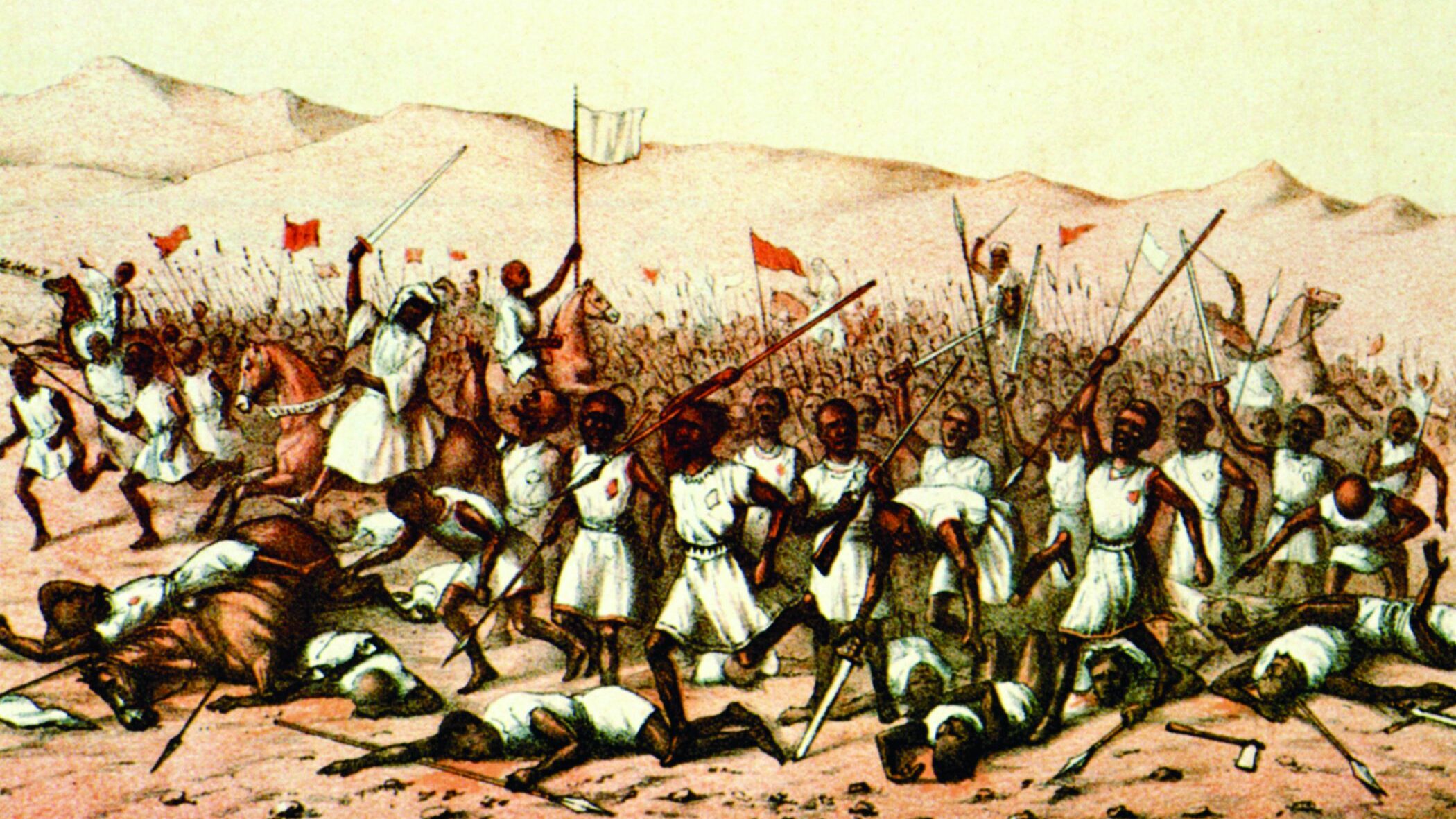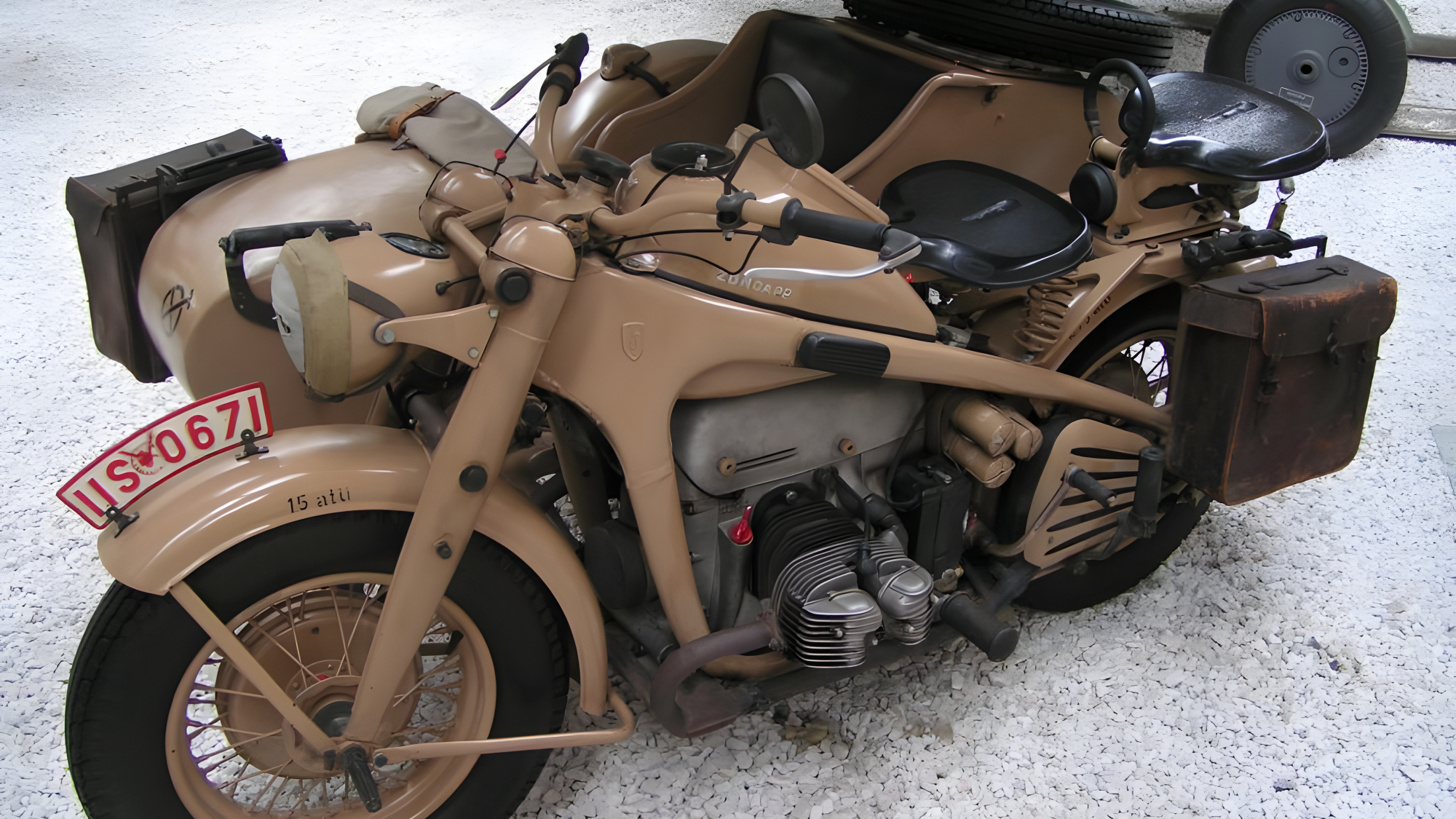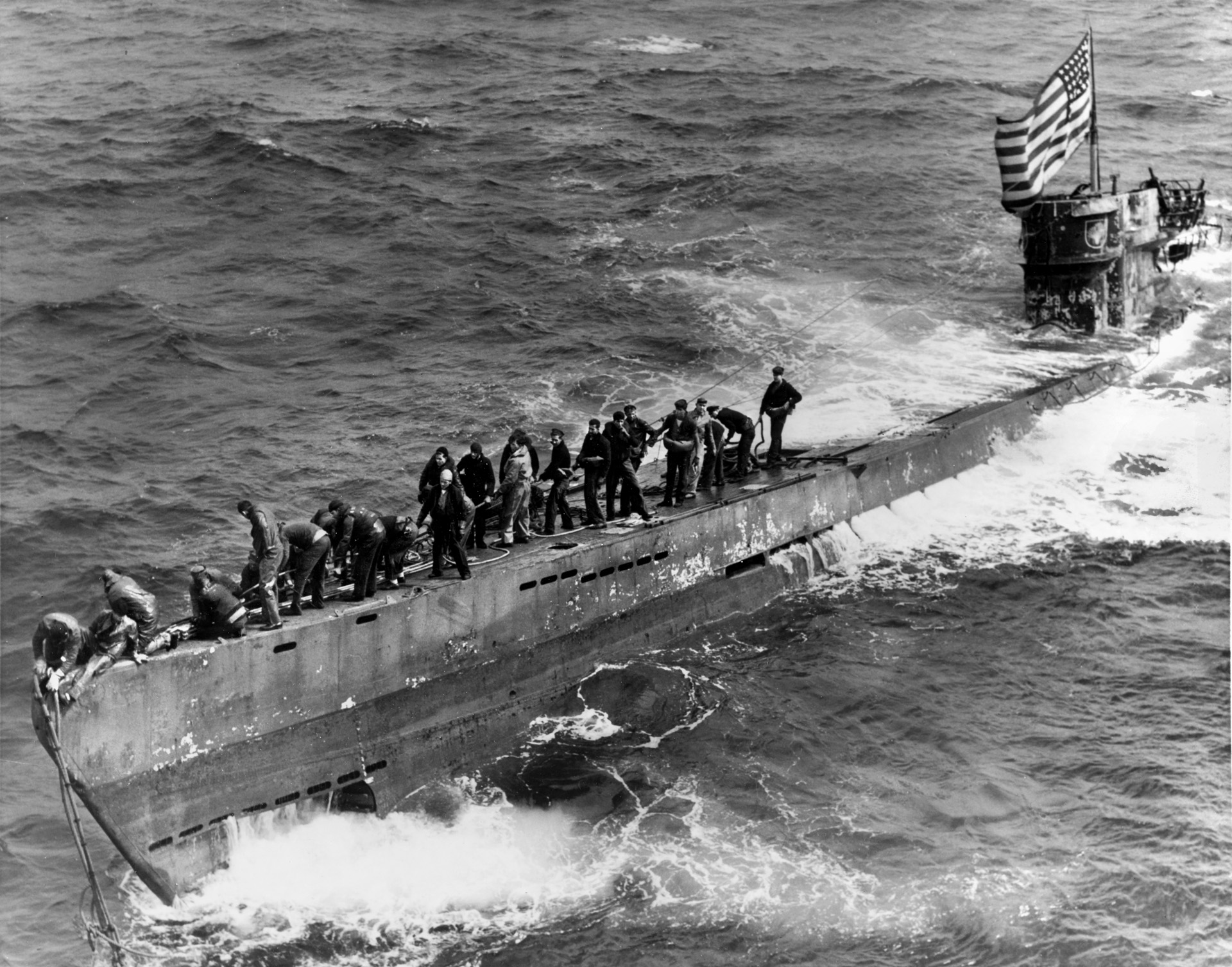By Christopher Miskimon
Specialist 4 George McDonald leaped out of a UH-1 helicopter on November 14, 1965, into a hellish firefight. McDonald served as a mortar man in Charlie Company, 1st Battalion, 7th Cavalry, and his unit was deploying into Landing Zone X-Ray deep in the Central Highlands of South Vietnam near Chu Pong Massif. As the helicopter set down, he saw soldiers lying in the tall grass firing their rifles into the trees around the landing zone. As soon as he and his comrades left the helicopter, bullets zipped past them. The nearby tree line was alive with muzzle flashes, each one signifying an incoming round from a weapon aimed at a human target.
The young man was carrying a stubby M-79 grenade launcher that did not have the range to reach the tree line. McDonald therefore borrowed an M-16 from the man next to him, aimed carefully, and began firing at the muzzle flashes until they finally stopped. Whether he hit the shooters or just convinced them to move will never be known, but the fire slackened enough for the mortar crew to move into cover and set up its weapon in an American-held section of the tree line. Within moments they were dropping bomb after bomb down the tube, launching them toward their North Vietnamese enemy.
When their ammunition ran out, McDonald heard a call from ahead. There was heavy fighting and the troopers in contact needed more help. McDonald went to their aid, but when he ran out of rifle ammunition, he returned to his mortar. It was not the last close combat he would see at LZ X-Ray; indeed, it was just the beginning of a harrowing three-day ordeal for a man who at that point had only two weeks left to serve in the U.S. Army.
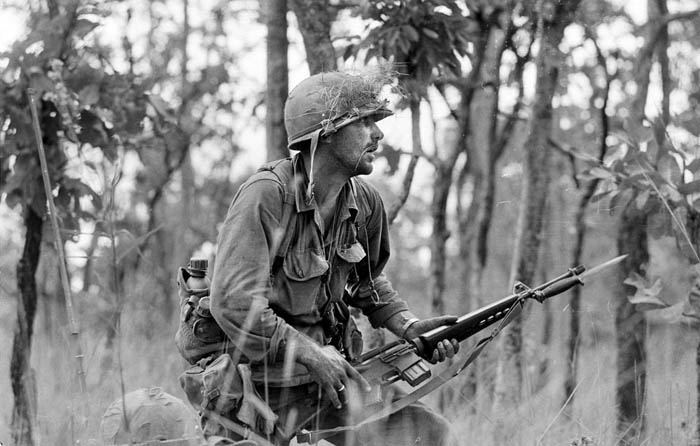
The communist insurgency in Vietnam was decades old by the time the United States dedicated ground troops in large numbers to the war. Small groups of American advisers had been there for years, even before France withdrew from its former colony in 1954. After the French left the nation became two states: a communist-controlled North Vietnam and a pro-Western South Vietnam. Despite the nominal peace, the war continued until the Americans chose to intervene with large ground units in 1965.
During that year the major threat to South Vietnam was in the Central Highlands, a mountainous region that was heavily forested and difficult to access. There were few roads, and the North Vietnamese Army (NVA) units that infiltrated into the area had almost complete freedom of movement. General Chu Huy Man commanded all of the NVA forces in the region, which were grouped together as the Western Highlands Field Front. There was a division’s worth of NVA regulars divided into the 32nd, 33rd, and 66th Regiments, which were supported by units of mortars and heavy machine guns that could double as antiaircraft weapons. Several battalions of Viet Cong guerrillas also stood ready to assist the NVA force. The NVA’s objective was to advance eastward from the Chu Pong Massif, which sat astride the Cambodian border. The NVA could receive reinforcements this way through the Ho Chi Minh Trail, a simple but massive supply route through the jungle. Attacking to the east, the NVA would slice through the Central Highlands and cut South Vietnam in two. This could end the war before American involvement became overwhelming.
General Man had a problem that had to be addressed first, though. The Americans had established a Special Forces camp at Plei Mei, which was situated about 20 miles east of the Chu Pong Massif. From there the Americans organized and directed the local Montagnard tribesmen into units known as Civilian Irregular Defense Groups, which ambushed NVA and Viet Cong forces. Thus, the NVA planned to wipe out the Special Forces camp. Man planned to employ a classic insurgent tactic. The 33rd Regiment would surround Plei Mei and put pressure on it, thereby prompting South Vietnamese forces to send a relief column to Plei Mei. The 32nd Regiment would ambush and destroy that column; afterward, both units would combine to destroy the camp.
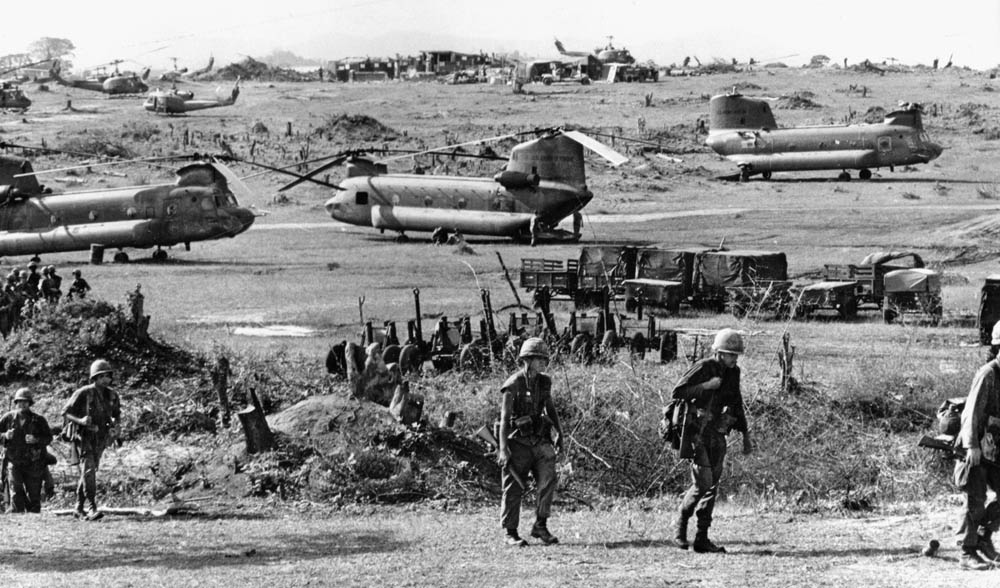
Plei Mei held 10 American Green Berets and about 300 tribesmen, a third of whom were on patrol. The attack began at 11 pm on October 19, 1965, with a hail of mortar, rocket, and recoilless rifle fire. Infantry followed the barrage, forcing the camp commander to call for air support. It began at 4 am, unloading bombs, rockets, and napalm upon the NVA troops. This went on for several days, for even though the NVA expected air attacks and deployed antiaircraft guns to contest American fixed aircraft, they were not prepared for the number of planes or their ability to attack at night. The NVA entrenched and awaited word about the destruction of the relief column.
The South Vietnamese relief force, which included tanks and armored cars, was delayed by the need to gather troops and did not set out until October 21. They were halted almost immediately at a bridge destroyed by local Viet Cong. This was apparently not coordinated with the NVA since it had the side effect of preventing the column from reaching the 32nd Regiment’s ambush site. When the column resumed the advance on October 23, the NVA launched its ambush but the South Vietnamese troops put up unexpected resistance, quickly deploying their column into a fighting formation. Hard fighting ensued and the relief column finally reached Plei Mei on October 25. The battered NVA units withdrew toward the Chu Pong Massif.
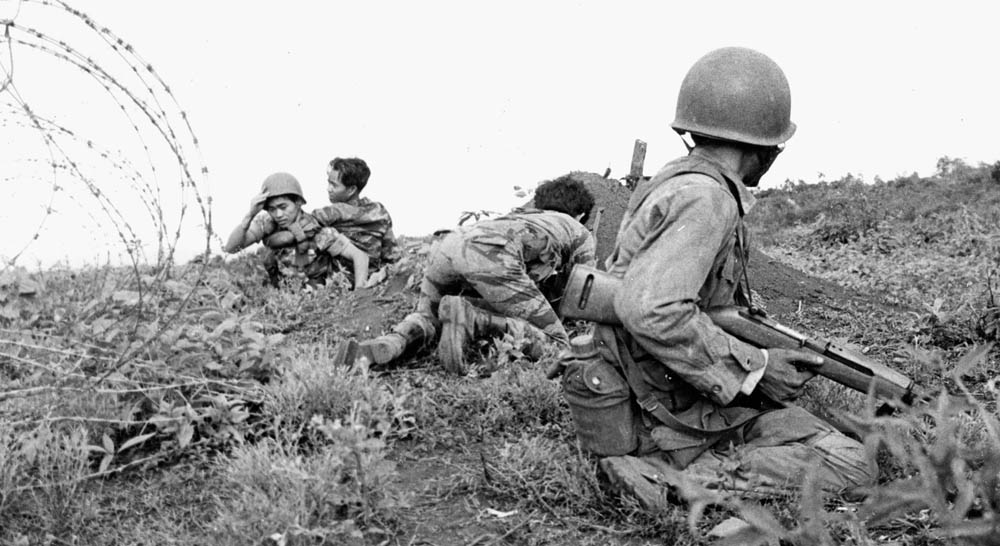
Their withdrawal led directly to the Battle of the Ia Drang when American forces decided to employ the newly deployed U.S. 1st Cavalry Division to pursue them. The helicopter-borne cavalry division had established its base in September at An Khe on Route 19. The airmobile division relied on its speed and mobility to catch enemy units. The Americans believed that it would provide a quick reaction capability in the Central Highlands where the lack of roads made timely ground pursuit impossible. Two ubiquitous transports, the UH-1 Iroquois (nicknamed Huey) and the CH-47 Chinook, could move troops, artillery, and supplies to wherever they were needed in a matter of hours. This meant the Americans could place blocking forces in the path of a retreating enemy and attempt to trap them so that artillery and air strikes could destroy them. This is exactly what the division began doing on October 28.
These American sweeps showcased the effectiveness of the air cavalry, but the NVA was far from finished. Replacements and fresh supplies streamed into the Central Highlands from the Ho Chi Minh Trail. General Man planned to resume the attack by mid-November. During that time the Americans planned to launch a search operation near the Chu Pong Massif, directly in the path of the gathering offensive.
The unit selected to carry out the operation was the 1st Battalion, 7th Cavalry, commanded by Lt. Col. Harold G. Moore. Moore was selected due to his extensive combat experience during the Korean War. Aside from a few other veterans of Korea and World War II, most of his troops were well trained but relatively inexperienced. The plan was to land Moore’s battalion of 440 troopers on the northeastern entryway to the mountains using 16 Hueys, placing the men behind the retreating NVA forces. Moore had a choice of three different landing zones and chose LZ X-Ray, the most centrally located. It was an open field about 200 yards long and 100 yards wide surrounded by elephant grass, conical-shaped termite mounds, and open forest that became denser as the elevation increased. Colonel Thomas Brown, the 3rd Brigade commander, warned Moore to keep his battalion tightly together and not get separated.
LZ X-Ray could only accommodate eight helicopters at a time. The helicopters had limitations on how much weight they could carry at this altitude, so it would take half a dozen trips to get the entire battalion assembled. Each cavalryman carried 300 rounds for his M-16. Each grenadier had 36 grenades for his M-79. A pair of M-60 machine guns accompanied each platoon and the rifle squads had portable, one-shot M-72 light antitank weapons (LAW) for penetrating enemy bunkers. Two batteries of 105mm howitzers were flown into LZ Falcon, eight miles west of Plei Mei, to provide fire support. Air support also was standing by. The Americans had plenty of firepower as long as their ammunition held out.
The men of 1/7 were moved to an assembly area near Plei Mei and gathered together for the flight to X-Ray on the morning of November 14. The first lift took off at 10:35 am for the 13-minute flight, their rotors blanketing the area in billowing clouds of the region’s suffocating red dust. Minutes earlier the artillery and some helicopter gunships began bombarding all three LZs with shells and rockets both to confuse the enemy as to the actual landing site and to suppress any enemy troops nearby. Soon X-Ray was covered in dust and smoke thrown up by the barrage. The helicopters in the first troop lift dove down to treetop level, making them harder to spot from a distance.
Huey transports roared into LZ X-Ray to disgorge their passengers. The troopers of Captain John Herrin’s B Company leaped off the transports. Also arriving on the first flight was Moore and Command Sergeant Major Basil Plumley, his senior NCO. Accompanying them were a handful of staff officers and a translator to help interrogate any prisoners that might be taken.
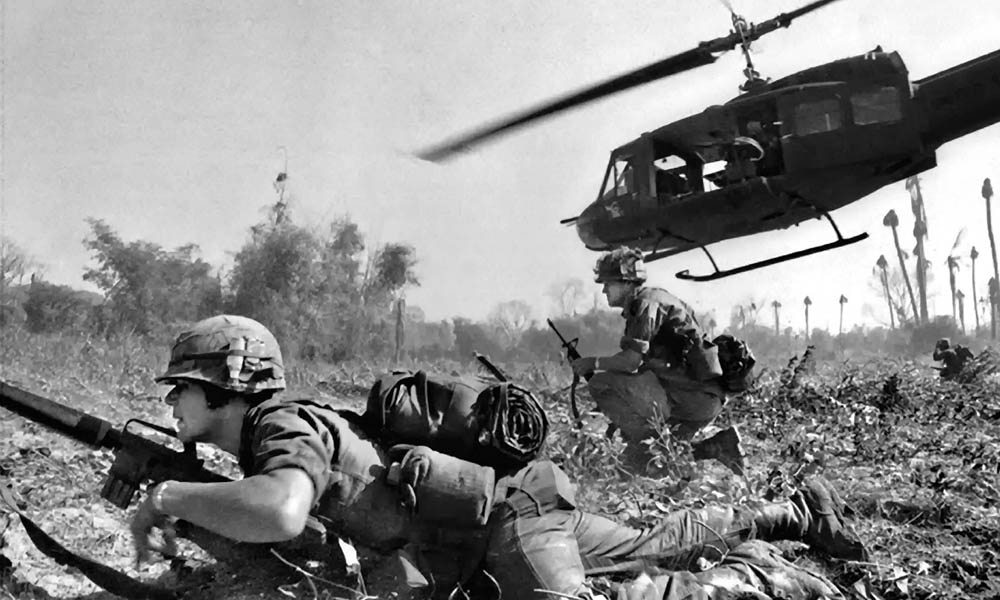
Within 10 seconds the empty helicopters were back in the air and the second group arrived. Moore and his support staff sprinted 75 yards to the cover of some old termite mounds. All of the arriving troopers sought cover as quickly as possible. Chu Pong Massif hovered above them, more than 1,000 feet over the landing zone. Captain Herrin began sending out patrols, and for the first few minutes the landing was unopposed.
Still, Moore felt the enemy was watching. His intuition was correct. The recent fighting had led the NVA to expect further aggressive American moves; however, they did not know where those moves would be made. North Vietnamese lookouts were posted throughout the area and the NVA leadership had mobile command groups to facilitate rapid responses to any American action.
The NVA and their Viet Cong auxiliaries were a light infantry force. Each soldier was equipped with an AK-47 assault rifle and several hand grenades. They were also liberally equipped with light machine guns and rocket-propelled grenade launchers. Their heaviest weapons were mortars and Soviet-made heavy machine guns, which were mostly posted as antiaircraft weapons along likely flight paths. One of the NVA’s key tactics was to engage American troops as closely as possible to prevent them from using artillery and air support for fear of causing friendly casualties. Another technique was to strike quickly and inflict as many casualties as possible before American artillery and aircraft could respond.
Herrin’s Bravo Company worked its way up the mountain with Lieutenant Al Devney’s 1st Platoon on the left and Lieutenant Henry Herrick’s 2nd Platoon on the right. Lieutenant Dennis Neal’s 3rd Platoon was in the rear. The 1st Platoon had gone only about 300 yards when Sergeant John Mingo’s squad found an enemy lookout sitting on the ground. The unarmed youth had only an empty canteen and a torn uniform. Moore interrogated the Vietnamese using his translator. The young man revealed there were three battalions in the area and they were eager to kill Americans, yet they had not found any. This meant the Americans were heavily outnumbered. At 11:20 AM the next flight of helicopters arrived with the rest of Bravo Company and part of Alpha Company. The prisoner was evacuated on a helicopter and another lift came in at 12:10 PM. Some of the troopers had paused to eat C-Rations but at 12:15 pm rifle fire rang out from the direction of Bravo Company.
Devney’s 1st Platoon was about 100 yards west of a dry creek bed with Herrick’s platoon to the right. The platoon members ran headlong into attacking NVA troops that were streaming down the mountain. Within minutes they were heavily engaged with the enemy trying to flank them on both sides. Both sides took casualties and the Americans were soon pinned down. Captain Herrin ordered Herrick and his platoon to tie in Devney’s men.
As they did so, 2nd Platoon also took fire from its right. The platoon responded by pursuing the enemy soldiers. Herren warned Herrick by radio to be careful, but he did not order him to break off the pursuit. As the men of 1st Platoon watched, the 2nd moved up toward them but kept right on going. Instead, Deal’s 3rd Platoon was ordered up to help the 1st Platoon. They also came under heavy fire, particularly from a concealed machine gun. All three of the company’s platoons were now engaged.
Herrick led 2nd Platoon down a trail after the enemy soldiers but they had disappeared. Herrick kept going, even though his men knew this was a bad idea. Soon they reached a small clearing and a ridgeline. They bumped into approximately 50 NVA troops. Both sides opened fire as the NVA troops broke both left and right. The American platoon was on two sides of a termite hill. Herrick ordered Sergeant Clyde Savage’s squad to flank the enemy and they did so, coming out of the trees firing on full automatic and using grenades. This surprised the NVA, killing a number of them. Suddenly another large group of Vietnamese appeared and a general firefight ensued. Herrick radioed that his platoon was being cut off. Herren told him to entrench and use artillery and mortar support to keep the enemy at bay.
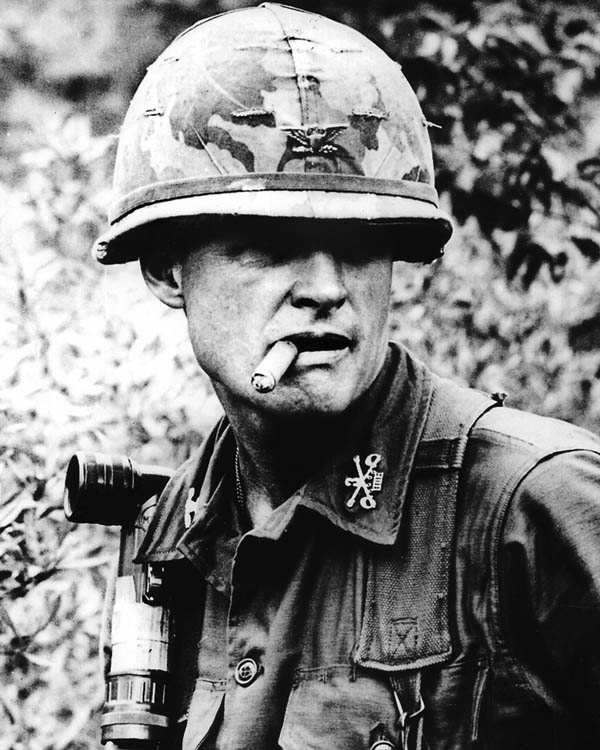
Bravo Company did not know it, but it was up against an entire battalion of NVA regulars. The next flight of helicopters arrived with the rest of Captain Ramon “Tony” Nadal’s Alpha Company and part of Charlie Company. Moore sent Nadal and his men to the left flank of Bravo Company, where they extended the slowly forming battalion perimeter and blocked the NVA’s route to strike the landing zone directly from the mountain. Captain Robert Edwards’ Charlie Company was kept at the landing zone as a reserve. They guarded the south side of the LZ against a flanking attack.
Herrick’s platoon by that time was completely encircled by the NVA. Attempts to reach it failed. Soon the rifle squads were pinned on a small knoll while the machine-gun squad was trapped about 30 yards downhill. The M-60 crews were doing fearful damage to the enemy, and the NVA were determined to knock them out. One crew was wiped out and the gun captured. The other crew made a dash for the knoll and made it but with precious little ammunition left. Sergeant Wayne Anderson, the M-60 gunner, ran into the small perimeter with his face on fire from a white phosphorus grenade. Two of his comrades knocked him to the ground and pried the burning fragments out of his face with their bayonets.
As more than 150 enemy soldiers swarmed around them, Herrick ran from one man to the next making sure they were still in the fight and doing his best to organize an effective defense. As he did so, a sharp burst of enemy fire struck him, his radioman, and a forward observer. Herrick died within a few minutes, after telling his men to burn their code books, redistribute ammunition, and call for artillery support. Platoon Sergeant Carl Palmer was wounded in the head about the same time and died minutes later, killed by an exploding grenade. Sergeant Robert Stokes took over and directed mortar fire until all the mortar rounds were expended. Stokes was struck twice by rifle fire in the head, which knocked him backward across a log. Sergeant Clyde Savage took over and reached Stokes’ radio, calling for more artillery. He called in the fire as close to the knoll as he dared.
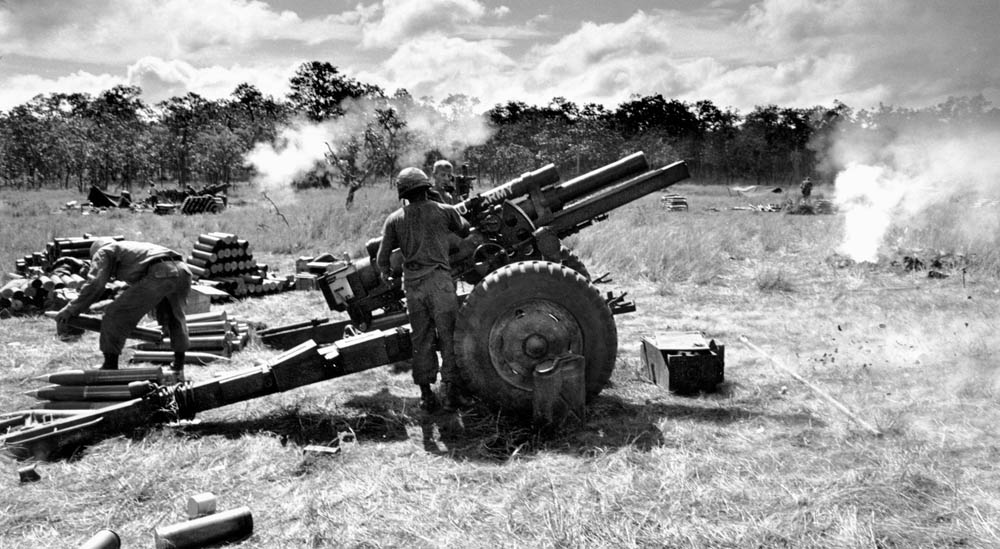
The barrage, combined with the desperate American defense, kept the NVA at bay. The firing died away, providing a desperately needed lull. Troopers crawled around collecting ammunition, grenades, and rifles from the dead and getting into better firing positions. The signal books and maps were destroyed and Savage retrieved Herrick’s radio. Of 2nd Platoon’s 29 men, eight were dead and 13 wounded. The survivors dug in and prepared for the next attack.
As the members of the 2nd Platoon fought desperately to survive the ordeal, enemy troops were receiving an introduction to combat against the Americans. The experience was much more intense than what the veterans among them had experienced against the less well-armed French a decade earlier.
Lo Khac Tam, a platoon leader with the NVA 66th Regiment, had only reached the Chu Pong Massif two days earlier. The long trek south on the Ho Chi Minh Trail had taken much out of the regiment, and its soldiers were heavily fatigued, he later recalled. His account of the battle is helpful in understanding the NVA experience.
The troops were “supposed to have a few days’ rest,” said Tam. “But then swarms of helicopters came to our area. Everyone thought we might not survive but I was a leader and so I had to push that thought away. I had to give orders to my men.” Those men were new to combat and were all ordered to fix bayonets, which they were told symbolized their fighting spirit.
Once in action, they took terrible losses from artillery, air strikes, and small arms fire but kept fighting. Several American participants recalled their effective use of cover, good marksmanship, and discipline. Their lack of heavy firepower was apparent, but their elan was undeniable. Their officers urged them over and over to attack. The officers did so knowing that it was imperative to eliminate the American position before it was reinforced.
Shortly after 2 pm another flight arrived carrying the rest of Charlie Company and Captain Ray Lefebvre’s Delta Company, the battalion’s heavy weapons company. As soon as the helicopters touched down, heavy enemy fired poured into them. Major Bruce Crandall, the helicopter squadron leader, remembered seeing NVA soldiers on both sides of his Huey, just outside the width of his rotor blades. Everyone nearby was shooting. Crandall stayed on the ground long enough to pick up wounded, then took off to make room for the next flight. The helicopters drew fire—the NVA troops knew they were key targets. If they could knock out the helicopters, they would cripple American air mobility. All of the helicopters suffered some damage and many crewmen sustained injuries. Moore decided to stop further landings until the landing zone was more secure.
Charlie Company 1/7 arrived just in time to take its place in the perimeter. Captain Edwards put the troopers into place just before a battalion of enemy troops struck their section of the line from the south. The roar of firing blended into the general battle as another enemy battalion attacked Alpha Company, trying to find the gap between Alpha and Charlie. A pair of M-60s covered the gap. The machine-gun fire mowed down many of the attacking NVA soldiers. Much of the fighting took place at close quarters with only a few yards separating the opponents. Sharp bursts of fire were punctuated by the blasts of grenades and the screams of the wounded and dying. A small group of Delta Company men reinforced the perimeter and wiped out a group of 30 enemy soldiers who were swinging around to try to flank the Americans.
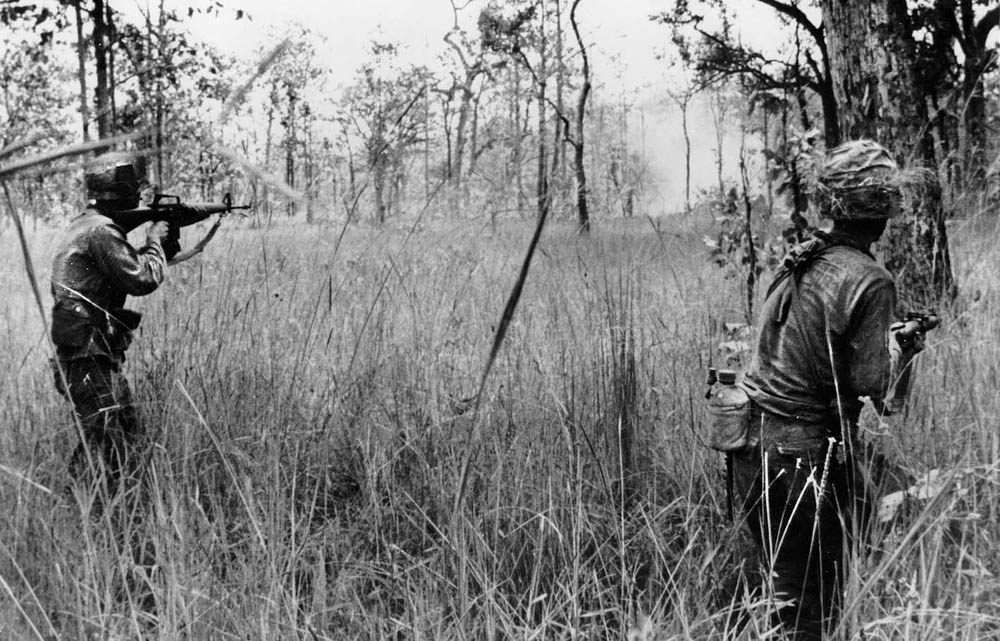
Many of the officers were wounded, often leaving capable sergeants in charge of their units. All the wounded were taken back to the termite mound where Moore had set up his headquarters. That position became a combination of headquarters, dressing station, and supply depot. Moore was in contact with Brown, who was overhead in a command and control helicopter. Brown wanted to land, but Moore waved him off. Instead, Brown focused his energies on coordinating reinforcements. Captain Myron Diduryk’s Bravo Company of 2/7 was ordered to prepare to fly into LZ X-Ray. The other two battalions of the brigade also were scheduled to arrive the following day.
The final troops to arrive that day were the last of the Delta Company troopers and Diduryk’s company. This gave Moore enough men to man a perimeter for the approaching night. The entire landing zone was being swept by enemy mortar and rocket fire. In return, American artillery dropped a hurricane of steel on the enemy. U.S. artillery batteries fired for five straight hours; during that time, two guns suffered broken hydraulics and a third had a burned-out barrel. The howitzers fired more than 4,000 rounds on the first day alone.
Jet fighters and propeller-driven A-1E Skyraiders dropped bombs and napalm around Chu Pong Massif, focusing on any concentration of troops. Six aerial rocket artillery gunships, each of which was armed with 48 rockets, conducted multiple missions, only stopping to refuel on every third mission. Their engines never shut down the entire day. The combination of artillery and air power made life a veritable hell for the NVA troops who now surrounded the American position.
One noteworthy incident reflected the fury of the close-quarters combat. Lieutenant Joe Marm, who led Alpha Company’s 2nd Platoon, was in the thick of the fighting on November 14. During an NVA assault, he spotted an enemy machine gun dug into a termite hill. It was firing burst after burst into the adjacent platoons of Bravo Company. Marm tried to knock it out with an M-72 Light Anti-Armor Weapon (LAW) rocket, as well as a hand grenade, but neither did the job. Determined to take out that machine gun, Marm charged the termite hill, threw a grenade behind it, and then shot the surviving NVA with his M-16.
Marm was struck in the jaw and neck during his assault. “I saw him throw a grenade behind an anthill and empty his weapon into it,” said Lieutenant Dennis Deal. “Then he fell to his knees. I said to myself: ‘Please get up, don’t be hurt.’ I did not know who it was … there was so much battlefield haze, dust, smoke.”
When Marm made it back to his platoon, they sent him to the aid station. The next day one of Marm’s friends checked behind the termite hill and found a dead NVA officer and 11 soldiers. Deal credited Marm with saving his life and many others through his brave act.
After his wounds were treated Marm was evacuated on one of the helicopters. From there he returned to the United States to receive proper care. He received the Congressional Medal of Honor for his bravery and selfless action.
Darkness fell over the battlefiel but brought little respite. Some of the NVA troops seemed not to know where the Americans were and stumbled into the perimeter with their rifles still slung, only to be shot down. At dusk Moore and Plumley walked the perimeter, checking to see that the companies’ defenses were tied together and the vital machine guns were well placed. He found the men to be in good spirits with high morale, but he was still concerned about the trapped platoon.
The landing zone was set up for night operations and more helicopters came in with fresh supplies. Aboard one of them was a young reporter named Joe Galloway, who had requested permission to board a supply-bearing Huey bound for the landing zone. Galloway sat on a crate of grenades as the Huey sped to LZ X-Ray. As it did so, Galloway saw signal lights that the NVA were using to direct their troops toward the Americans. U.S. artillery began shelling the area where the lights were seen, at one point causing a huge secondary explosion when a supply point was hit. When Galloway landed, he hit the dirt with the other arrivees. Galloway ultimately received a National Magazine Award for his coverage of the Ia Drang battle.
During the night of November 14 the NVA probed the perimeter several times. The American machine gunners were ordered not to fire so as not to reveal their positions, but the grenadiers launched 40mm grenades and artillery fire was called in frequently. When not repelling enemy probes, the men dug the foxholes they did not have time to dig earlier. The mortar crews had hundreds of rounds for the coming day. Artillery continued to fall around the encircled platoon, thanks to Savage’s skill at directing the fire. At 3:15 am the sound of bugles resounded on the mountain above the trapped Americans. Air strikes were called in to break up the NVA assault.
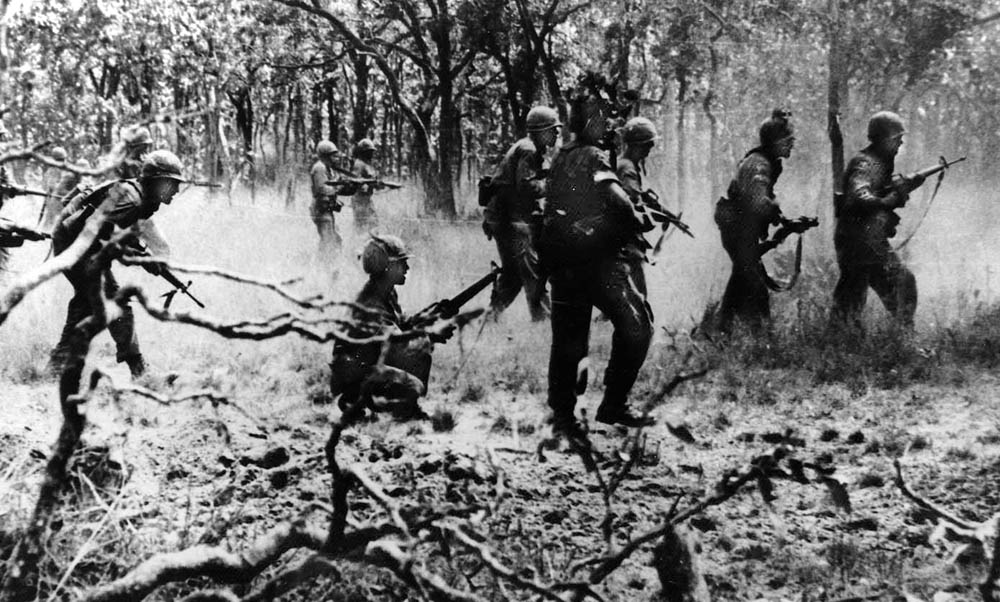
The arrival of dawn on November 15 brought no respite. It began with an eerie quiet. This bothered Moore, who thought it was odd. He sent out patrols to search for the enemy; meanwhile, he began planning a counterattack to rescue the trapped platoon. As he was doing this, men from one of the patrols rushed into the landing zone shouting, “They enemy is coming!” Machine gunners were ordered to wait until the enemy was close for maximum effect. Hundreds of enemy soldiers launched a formidable assault.
The attack was made by an NVA battalion reinforced with Viet Cong soldiers. Charlie Company was hit the hardest. Captain Edwards was wounded, but he stayed on the battle line directing his troopers. The enemy had worked its way into the heavy weapons. M-60 machine gunners fired into the attackers, mowing down NVA regulars wearing pith helmets covered in tree branches for camouflage. The situation soon became desperate. The enemy also struck other parts of the perimeter, including Delta Company’s positions. The attack faltered quickly, though, because Delta Company had a large number of M-60s.
Air Force Lieutenant Charlie Hastings was the battalion’s forward air controller. As such, he was tasked with directing incoming air support. Believing the American position was in danger of being overrun, Hastings broadcast the code, “Broken Arrow.” This brought all available U.S. and Republic of Vietnam aircraft throughout South Vietnam to assist the hard-pressed 1/7. Soon planes were stacked at 1,000-foot intervals from 7,000 to 35,000 feet, each of them waiting to drop their ordnance on the attacking NVA.
Specialist Jon Wallenius, a mortar observer from Bravo 2/7, was with his mortar crew when he saw an enemy soldier poke his head up in a Y-shaped tree trunk just 30 yards away. Wallenius took aim and fired. The head disappeared, only to reappear moments later. Wallenius fired again, and the head disappeared once again. The young American could not understand why he was repeatedly missing his target, given that he was a crack shot. Wallenius later learned that it was not the same soldier. He had actually been picking off the enemy soldiers one at a time. He and his fellow troopers realized this when they discovered seven enemy bodies at the base of the tree.
Tam had his own memories of the horrible fighting that morning. “We used bayonets, and suffered terrible losses,” he recalled. Many of his men were enraged, no doubt more so by the terrible shelling and bombing they endured. He noticed that the Americans always tried to evacuate their wounded, but it was not always possible. When a wounded U.S. air cavalryman was found, Tam encouraged his men to take him prisoner. Yet some of his men were beyond control, and they maliciously killed the helpless American casualties.
The Americans often hurled colored smoke grenades in front of their positions. Tam knew this was to mark their locations for the air support. “We knew that the Americans used smoke to signal where their line ended, and we tried to get inside that line of smoke,” recalled Tam. “We had to get close. If we did not, we would be killed right away.”
The close air support was helping keep the enemy at bay, but it became more difficult to control it as the day went on. The American troopers kept using smoke to mark their positions and allow the strikes to come in very close, but after a time the entire battlefield was covered in smoke, dust, and fire. Moore decided to commit his reserve, the battalion reconnaissance platoon, in a counterattack to drive the NVA back on the left side of Charlie Company. As that took place, a horrifying incident occurred.
Two U.S. F-100 Super Sabres armed with canisters of napalm moved into position to make their bombing run on what they believed was an enemy target at 8:30 am. The pilot in the lead jet released his two canisters. Moore and those near him could see the six-foot-long canisters tumbling through the air toward them. The canisters exploded in a ball of flame inside the perimeter near Moore’s command post. Moore shouted to Charlie Hastings to call the second plane off. “Pull up!” Hastings screamed into his radio. At the last second the fighter did so; however, two cavalrymen were severely burned in the explosion.
It was a terrible accident of war, but the airstrikes were keeping the enemy back. Moore told Hastings to continue bringing in air support. Moore also requested by radio that brigade headquarters send reinforcements. Soon Alpha Company, 2nd Battalion, 7th Cavalry arrived and took its place on the perimeter. Over the course of the morning, more troops from that battalion arrived by helicopter. At the same time, Lt. Col. Robert Tully’s 2nd Battalion, 5th Cavalry was flown to a nearby landing zone. Tully led it overland, through enemy-controlled territory, to LZ X-Ray. They arrived at 12 pm.
With troopers from two other battalions arriving at LZ X-Ray, Moore decided to send a rescue force to extract the trapped platoon. He designated two companies of 2/5 Cav to reinforce Herren’s Bravo Company. Although Herren’s men were exhausted, they knew the terrain and the best path to take to the trapped platoon. Helicopters preceded them, shooting rockets to suppress any enemy troops between them and the trapped platoon. As the American force moved out, artillery observers called in marking rounds. This was a preliminary measure that enabled them to fire barrages of artillery quickly if necessary. It was a tense time as the advancing troopers expected the enemy behind every tree and termite mound.
Nothing happened as the relief force neared the trapped platoon, though. Moore ordered his troops within the perimeter to advance and police the battlefield. As they cautiously did so, they stumbled upon enemy bodies and abandoned weapons and equipment. In addition, they recovered some American bodies. A group of Charlie Company troopers ran into an enemy force and a brief firefight ensued. Still determined to inflict as many casualties on the Americans as possible, NVA regulars had tunneled into the creek bed and had begun hurling grenades at the Americans. Staff Sergeant Charles McManus saw one and leapt upon it after shoving two comrades out of the way. He died saving his friends, who killed the men in the tunnel with 40mm grenades from an M-79. Back at the command post at LZ X-Ray, Brown arrived on a helicopter to assess the situation. He asked if he should establish his own headquarters there and take over. Moore politely declined the offer. Brown trusted both Moore and Tully, and so he let them direct the ground fighting. He informed them, though, that he planned to withdraw 1/7 the next day when B-52 Stratofortresses were scheduled to bomb the Chu Pong Massif. It was important to remove the troops so that they were not accidentally struck by the 750-pound and 1,000-pound bombs.
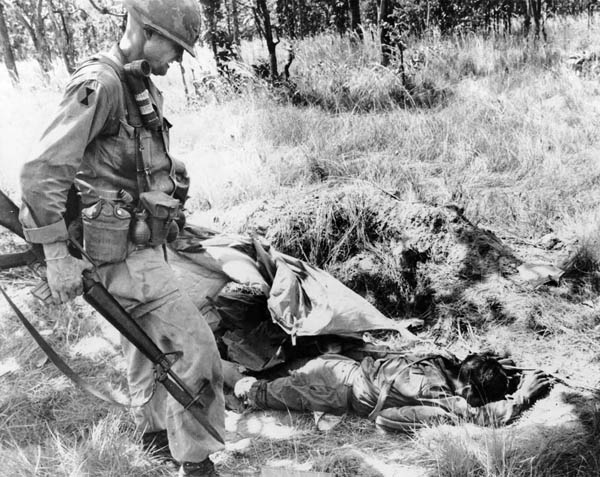
Just before 3 pm Herren’s company reached the trapped platoon. The ground around it was blasted from artillery fire. Enemy rifle fire broke out but the Americans replied with machine guns and quickly swept the resistance aside. When they found Savage and his men, they were covered with dust and debris and practically blended into the ground. Only seven men were unwounded, with 13 injured and nine dead. Rather than take the time to check the enemy dead, the entire force quickly moved back to the landing zone, carrying the dead and those unable to walk. It had been a grim two days for the encircled platoon, but the survivors were finally back with their battalion. The troopers then prepared to spend one last night at LZ X-Ray.
In the hours before dusk, the Americans dug in, preparing foxholes and setting out booby traps and warning devices. All the casualties were evacuated and ammo was resupplied. At 12 am the enemy began firing machine guns. Green tracers zipped over the troopers’ heads. The troopers estimated that the enemy machine guns were about 500 yards away. An hour later five NVA probed the perimeter. The troopers killed two before they disappeared back into the darkness.
At 4 am trip flares and other warning devices began going off south of the perimeter. Soon the enemy appeared, charging in human-wave attacks. The Americans opened fire and called in artillery, a mixture of high-explosive and white phosphorus. An entire NVA battalion was attacking, but they were repulsed within minutes. A half hour later they tried again but were once more turned back. Overhead a C-123 flare ship lit up the battlefield, giving the Americans clear targets. Two more assaults before dawn also failed.
It was eerily quiet. Drawing on his extensive combat experience, Moore suspected the enemy was still nearby, preparing to attack another section of the perimeter. He therefore ordered everyone to conduct a so-called mad minute at 6:55 am. This entailed all of the troopers firing on full automatic at anything that might be an enemy position. The tactic worked because a group of 50 enemy soldiers began firing back. The troopers drove them off, killing several snipers in the process.
The cavalry troopers spent the morning securing their perimeter and recovering the last few dead troopers. Although there were still a few NVA scattered around the perimeter, they were killed with grenades or rifle fire. At that point, Moore received orders to prepare his troops for withdrawal from the landing zone. Determined that no American bodies would be left behind, he ordered his men to make one last sweep of the area.
American casualties amounted to 79 killed and 121 wounded with no one missing. Although no precise number is available for the NVA losses, the Americans counted 634 dead on the battlefield. The Americans estimated that the North Vietnamese had taken as many as 1,000 of their slain comrades with them as they withdrew from the battlefield.
The Americans returned to their base camps for rest and reorganization. The NVA withdrew to continue the fight from its mountain bases. Tam and a comrade were separated from their unit and hid in a cave for two days. Exhausted, hungry, and thirsty, they rejoined their regiment, but they found it in a shell-shocked state. Some men would not wash themselves, while others refused to get out of their hammocks. To their credit, they had fought with great discipline and bravery. The Americans who fought at Ia Drang were impressed with the NVA regulars’ performance and their ability to stand up to American firepower.
In many ways the battle at LZ X-Ray was a draw, but each side had proven its toughness and particular capabilities. The Americans had mobility and firepower while the NVA showed its tenacity and endurance. The NVA plan to split South Vietnam in half was thwarted by the American campaign, though. The NVA never again willingly engaged the 1st Cavalry Division in head-to-head combat. Although the communists were willing to spend lives to achieve victory, they could ill afford another defeat such as they had suffered in the bloody fight at LZ X-Ray.
